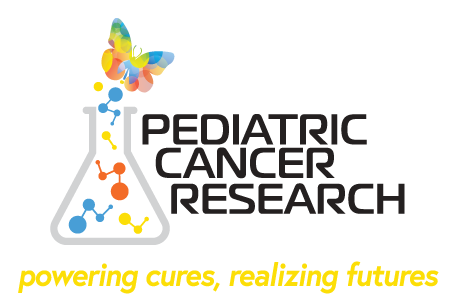The past year has brought along many scientific advances in the world of pediatric oncology. This month, we are highlighting the role of technology and targeted therapies in managing pediatric cancers. The advances shared here all have one very important thing in common: they could significantly manage the amount of toxicity children are exposed to during treatment. That is something we all embrace. Please read on to learn about three areas where these advances are progressing and giving cause to be optimistic.

Targeted Therapies Decrease the Need for Toxic Chemotherapies
For a variety of pediatric cancers, targeted therapies, which take advantage of our understanding of the molecular biology of these diseases, are changing clinical management and outcomes. As a result, clinicians are no longer very dependent on classical cytotoxic chemotherapy, particularly as the first line therapy. This strategy improves efficacy of the treatment and decreases the toxic side effects so often experienced with chemotherapy treatment. The benefits are already apparent in the clinic, where physicians are leading a revolution in application of targeted therapies. Some examples of targeted therapy are Gleevac (BCR-ABL inhibitor) for chronic myelogenous leukemia, Vemurafenib (BRAF inhibitor) for brain tumors, and Trametinib (MEK inhibitor) and Tazemetostat (EZH2 inhibitor) for a variety of cancers including breast, bladder, lung, and brain tumors.

Focused Ultrasound Can Improve Drug Delivery
One exciting new technology that is currently in clinical trials for a range of tumor types is the application of focused ultrasound to a tumor bed. Focused ultrasound application results in opening of the cells that make up blood vessel walls, thereby increasing the ability of a drug in the blood stream to enter a targeted organ or tumor. This technology is therefore being used in combination with a wide variety of therapeutic agents, including chemotherapy and small molecule inhibitors, with promising findings. One particularly exciting tumor type for which focused ultrasound may play an important role is brain tumors. By the virtue of their location, drug therapy delivery is difficult for brain tumor treatment due to a structure known as the blood brain barrier. This barrier between the bloodstream and brain tissue normally functions to keep harmful substances from damaging the brain, but it also blocks effective delivery of chemotherapeutic agents into brain tumor tissue where it is needed. As a result, higher doses of drug are often used to gain a therapeutic effect, resulting in greater, often toxic systemic side effects. The use of focused ultrasound to open the blood brain barrier is very exciting, as it could make possible the use of a variety of drugs at lower doses, thereby limiting side effects while maximizing therapeutic effect. As an example, the team at Children’s National Medical Center in Washington DC has an ongoing clinical trial of this technique for children with brain tumors and we are excited to monitor their work and learn of their results

Robotic Devices Deliver Payloads On Site
Another exciting technology in development is the use of miniature robotic devices to deliver small amounts of a therapeutic substance, including classical chemotherapeutics, molecular therapies, cellular therapies, and even oncolytic viruses, to a tumor site. Animal studies by the team who developed this technique, Bionaut Labs, have shown that these miniature robots can be delivered using a small needle into the bloodstream or spinal fluid space, and navigated to carry their therapeutic payload safely to the defined target. There, the payload is released and the robot is then navigated back to the entry site for retrieval. Clinical trials of this strategy are currently in development by Bionaut at a variety of clinical sites for difficult to treat pediatric tumors, including brainstem tumors.
We hope you are enjoying these monthly installments about advances in research. If you have thoughts on what else you would like to learn about, or any suggestions at all, please feel free to send them to us. Just click on our names below to start an email.
Amanda Saratsis, MD
Board Member, Scientific Affairs
Jeri Wilson
Executive Director, CSPG





